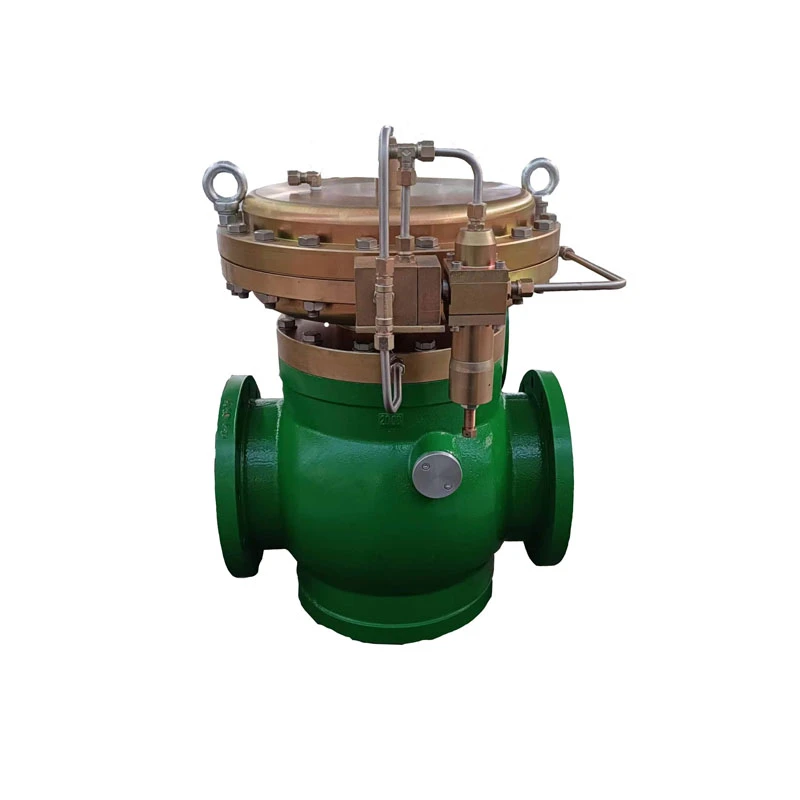
Dec . 16, 2024 04:59
Back to list
Natural Gas Pressure Regulation Facilities for Safe Distribution and Usage
Natural Gas Pressure Reducing Station An Essential Component of Gas Distribution Systems
Natural gas plays a vital role in modern energy systems, serving as a key resource for heating, electricity generation, and industrial processes. To ensure that natural gas can be delivered safely and efficiently from production sites to end users, pressure reducing stations (PRS) are essential components in the gas distribution network. This article explores the purpose, operation, and significance of natural gas pressure reducing stations.
What is a Pressure Reducing Station?
A natural gas pressure reducing station is a facility that reduces the high pressure of natural gas coming from transmission pipelines to a lower, more manageable pressure suitable for distribution to homes and businesses. The natural gas transported through high-pressure pipelines can exceed 1,000 psi (pounds per square inch). However, this pressure is far too high for residential or commercial usage, where operating pressures typically range from 1 psi to 60 psi.
The Function of PRS
The primary function of a pressure reducing station is to ensure that gas is delivered at a consistent and safe pressure. This is critical for several reasons
1. Safety High-pressure gas can pose significant safety risks, including the potential for leaks and explosions if not properly managed. By reducing the pressure to a controlled level, PRS enhances safety for both the infrastructure and end users.
2. Equipment Protection Many appliances and systems, such as gas heaters, stoves, and industrial burners, are designed to operate at specific pressure ranges. The PRS protects these systems from potential damage caused by high pressure, ensuring their longevity and effectiveness.
3. Regulatory Compliance The gas distribution industry is heavily regulated. PRS must comply with safety standards and pressure regulations set by government bodies, ensuring the gas delivered to consumers meets strict safety and quality criteria.
Components of a Pressure Reducing Station
natural gas pressure reducing station

A typical natural gas pressure reducing station includes several key components
- Regulators These devices are used to lower the gas pressure from the incoming supply line to the desired level. Regulators automatically adjust the flow of gas to maintain a consistent outlet pressure, regardless of fluctuations in the upstream supply.
- Valves Various types of valves are utilized in a PRS, including shut-off valves for emergency situations, control valves for flow regulation, and relief valves to prevent excess pressure buildup.
- Filtration Systems To protect the regulators and downstream equipment from impurities, filtration systems are installed to remove debris and contaminants from the gas.
- Monitoring Equipment Pressure gauges, flow meters, and other monitoring instruments are essential for tracking the operational performance of the PRS. These tools help operators ensure that the station functions as intended and allows for timely maintenance.
Importance in the Energy Infrastructure
The role of natural gas pressure reducing stations extends beyond merely managing pressure. They are crucial in maintaining the reliability and efficiency of the entire natural gas supply chain. By facilitating the transition of gas from high-pressure transmission lines to lower-pressure distribution networks, PRS enable the efficient delivery of energy to consumers.
Furthermore, in the context of increasing energy demands and the push for greener alternatives, pressure reducing stations can enhance the integration of renewable gas sources, such as biogas or hydrogen, into existing infrastructure. This adaptability is essential as the energy landscape evolves.
Conclusion
Natural gas pressure reducing stations are indispensable in the modern energy sector. They ensure that natural gas is safely and effectively distributed from production to end users while complying with safety and regulatory standards. As the demand for natural gas continues to rise, the importance of these stations will only grow, highlighting their critical role in a sustainable energy future. Understanding the function and significance of PRS is vital for anyone involved in energy management, infrastructure development, or regulatory compliance within the natural gas industry.
Next:
Latest news
-
Safety Valve Spring-Loaded Design Overpressure ProtectionNewsJul.25,2025
-
Precision Voltage Regulator AC5 Accuracy Grade PerformanceNewsJul.25,2025
-
Natural Gas Pressure Regulating Skid Industrial Pipeline ApplicationsNewsJul.25,2025
-
Natural Gas Filter Stainless Steel Mesh Element DesignNewsJul.25,2025
-
Gas Pressure Regulator Valve Direct-Acting Spring-Loaded DesignNewsJul.25,2025
-
Decompression Equipment Multi-Stage Heat Exchange System DesignNewsJul.25,2025

